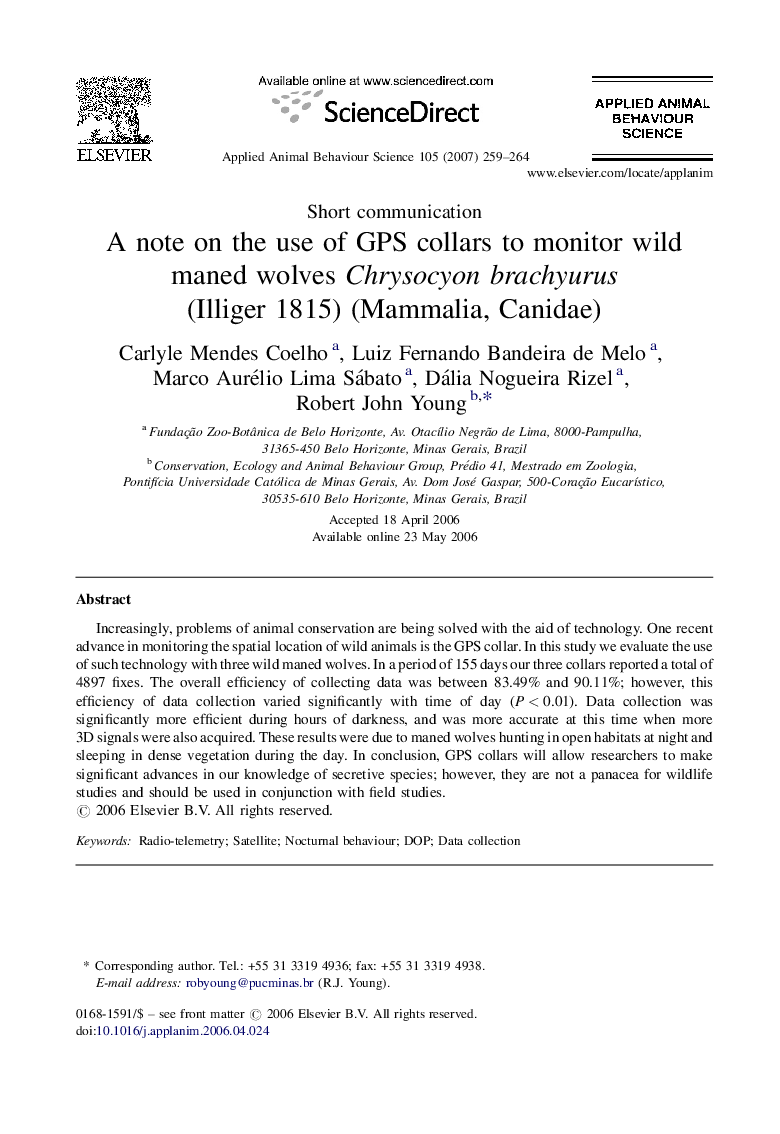| Article ID | Journal | Published Year | Pages | File Type |
|---|---|---|---|---|
| 4524012 | Applied Animal Behaviour Science | 2007 | 6 Pages |
Increasingly, problems of animal conservation are being solved with the aid of technology. One recent advance in monitoring the spatial location of wild animals is the GPS collar. In this study we evaluate the use of such technology with three wild maned wolves. In a period of 155 days our three collars reported a total of 4897 fixes. The overall efficiency of collecting data was between 83.49% and 90.11%; however, this efficiency of data collection varied significantly with time of day (P < 0.01). Data collection was significantly more efficient during hours of darkness, and was more accurate at this time when more 3D signals were also acquired. These results were due to maned wolves hunting in open habitats at night and sleeping in dense vegetation during the day. In conclusion, GPS collars will allow researchers to make significant advances in our knowledge of secretive species; however, they are not a panacea for wildlife studies and should be used in conjunction with field studies.
